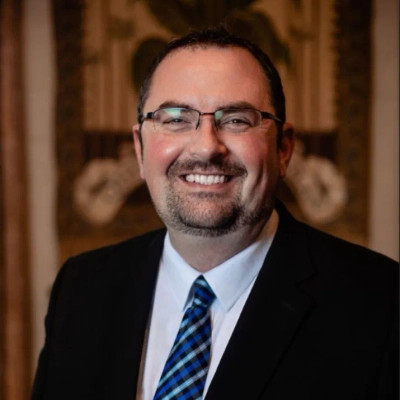10 Ways to Repair Damaged Stakeholder Relationships Through Strategic Communications
In the world of business, stakeholder relationships can make or break an organization's success. This article delves into strategic communication techniques that can effectively repair damaged stakeholder relationships, drawing on insights from industry experts. Discover practical approaches to rebuild trust, enhance transparency, and foster collaborative problem-solving with key stakeholders.
- Build Trust Through Radical Transparency
- Embrace Humility in Client Communication
- Listen Actively to Stakeholder Concerns
- Invite Stakeholders into Problem-Solving Process
- Implement Listen-First Approach for Rebuilding Trust
- Create Structured Remediation Roadmap
- Pair Transparency with Concrete Accountability
- Establish Regular Client Review Meetings
- Proactively Address Issues with Honest Solutions
- Maintain Consistent Crisis Communication
Build Trust Through Radical Transparency
Repairing stakeholder relationships comes down to one word: trust. And trust is built in the open. One of the most challenging times was early on when a partner questioned whether creator-led UGC could really deliver the same ROI as polished campaigns. There was hesitation, and that hesitation began to strain the relationship.
The recovery plan was simple but strategic. Instead of trying to win the argument with promises, we leaned into radical transparency. We opened the books, showed them Ranked's live campaign dashboards, and walked them through real data, not just averages, but cultural insights down to the zip code. Then, we ran a test side by side: their preferred polished creative versus authentic UGC.
The most effective element was letting the data and the community speak. Engagement and conversions were dramatically higher on the UGC side, and the partner could see the proof for themselves. That shift not only repaired the relationship but turned skepticism into advocacy.
The lesson: when communication is strained, over-communicate with facts and cultural context. People don't just need reassurance; they need to see the receipts.
Embrace Humility in Client Communication
In our business, our "stakeholders" are our clients' families, our community partners, and the referral network we've built. A few years ago, we had a serious issue with a client who left our program against our advice. The family was furious and felt we had failed them. They started telling everyone they knew—doctors, therapists, other families—that we were a poor choice. The damage to our reputation was real and immediate.
My first reaction was to try to defend our process. I wanted to explain all the things we did, to show them where they were wrong. I put together an email with bullet points and clinical notes, ready to send. But I stopped myself. That approach would have just made things worse. It would have turned a family's grief into a debate, and that's not who we are.
The most effective element of our recovery plan was radical transparency and humility. I called the family myself. I didn't send an email; I made a human connection. I didn't try to defend our program. I just said, "I hear you. I'm so sorry that you're going through this, and I'm sorry that we contributed to your pain." I didn't blame them or their loved one. I took responsibility for their experience.
The tone of the conversation shifted immediately. They weren't yelling anymore. They were talking. We moved from arguing about blame to talking about their grief and their fear. I asked them what we could do to support them, even though their loved one was no longer in our care. We connected them with a local support group and offered to provide support to them, free of charge.
The outcome was incredible. They didn't just stop talking negatively about us; they started telling people how we handled the situation with compassion and integrity. We didn't win them back as a client, but we won back their respect and trust. It taught me that in our business, you can't repair a damaged relationship with a strategic plan. You have to do it with a human being who is willing to be honest and humble. That's the most effective strategy there is.
Listen Actively to Stakeholder Concerns
We hit a rough patch with a client after a campaign delay made them miss a big media window. We got on small video calls with their team and even some of the journalists who'd been affected, instead of sending out a long apology email. The goal was simple and was to give them space to vent, let us listen, and answer questions in real time. It felt more like a conversation than a statement, which helped take the edge off quickly.
Everyone got ten minutes, uninterrupted, to explain how the mistake had impacted them. That's when we learned things we hadn't even thought of, like how newsroom schedules were completely thrown off by our late materials. We set up new lead-time rules and shared a live dashboard so they could see changes happening day by day. The real win was showing we weren't only apologizing, but also we were listening and fixing it with them.

Invite Stakeholders into Problem-Solving Process
"The turning point came when we stopped trying to defend our reputation and started inviting stakeholders into the solution."
There was a time when a major project delay strained relationships with a key partner, and silence would have only deepened the mistrust. Instead of becoming defensive, we doubled down on transparency, laying out what went wrong, what we were doing to fix it, and how we'd prevent it from happening again. The most effective element of our recovery plan wasn't a polished presentation; it was the genuine, ongoing dialogue that rebuilt confidence. By keeping stakeholders consistently informed and involving them in the solution, what could have been a fractured relationship turned into a stronger, more collaborative one.
Implement Listen-First Approach for Rebuilding Trust
We damaged trust with teachers after changing our payment structure without proper consultation. The most effective part of our recovery plan was using a listen-first approach. Instead of sending a broad explanation email, we held small virtual meetings where teachers could voice their frustrations openly. We focused on listening, not defending. This simple act immediately rebuilt trust and showed we valued their input. The outcome was not only repaired relationships but also a stronger, co-created payment model that worked better for everyone.

Create Structured Remediation Roadmap
A regional client experienced a steep decline in local search visibility after an algorithm update, and frustration spread quickly among stakeholders who believed the campaign had failed. The immediate risk was the erosion of trust, not just in the SEO strategy but in the partnership itself. The recovery plan began with transparent communication, including a detailed breakdown of what had changed in the algorithm and how those shifts specifically affected their rankings. Instead of generic reassurances, we presented comparative data that showed similar impacts across their competitors, which reframed the problem as industry-wide rather than isolated.
The most effective element was setting a structured remediation roadmap with measurable checkpoints. Stakeholders were involved in reviewing keyword priorities, approving content adjustments, and tracking incremental recovery over 30, 60, and 90 days. That shared ownership helped rebuild confidence, since progress was visible and tied to agreed-upon actions. Over time, the relationship grew stronger because stakeholders saw that the setback had been handled with clarity, accountability, and a plan grounded in evidence rather than promises.

Pair Transparency with Concrete Accountability
After a funding decision was delayed longer than anticipated, several stakeholders expressed frustration over the lack of updates. The relationship strain came not from the decision itself but from the silence that surrounded it. The recovery plan began with direct outreach, where leadership personally called key supporters to acknowledge the lapse and explain the circumstances candidly. Written updates followed soon after, with clear timelines and points of contact included.
The most effective element was pairing transparency with accountability. Rather than offering general reassurances, we shared specific steps being taken to prevent similar delays in the future, such as new reporting schedules and designated communication liaisons. Stakeholders responded positively once they saw that their concerns were not only heard but also acted upon. That combination of honesty and concrete follow-through was critical in restoring trust and strengthening long-term partnerships.

Establish Regular Client Review Meetings
When we faced recurring customer complaints about a lack of communication at Spectup, I led a comprehensive overhaul of our stakeholder engagement approach. We implemented mandatory update checkpoints in our project management framework and introduced monthly review meetings with clients to provide consistent touchpoints. The most effective element of our recovery plan was establishing these structured client review meetings, which not only addressed immediate concerns but also rebuilt trust by demonstrating our commitment to transparency and partnership.

Proactively Address Issues with Honest Solutions
When we faced significant project delays that threatened client relationships, I found that getting ahead of the problem was crucial. I immediately reached out to our clients before they discovered the delays themselves, explained the situation honestly without excuses, and presented several options to move forward. The most effective part of our recovery strategy was this transparency combined with actionable solutions. Clients told us later that they appreciated not being kept in the dark, which ultimately preserved their trust despite the setbacks.
Maintain Consistent Crisis Communication
During a major system outage at Zapiy.com, we faced significant stakeholder relationship challenges that required immediate strategic communication. I implemented a comprehensive recovery approach that included proactive outreach to customers, transparent acknowledgment of the issues, and regular updates on our resolution progress. The most effective element of our recovery plan was maintaining consistent communication throughout the crisis, which helped preserve customer trust despite the technical difficulties we were experiencing.






